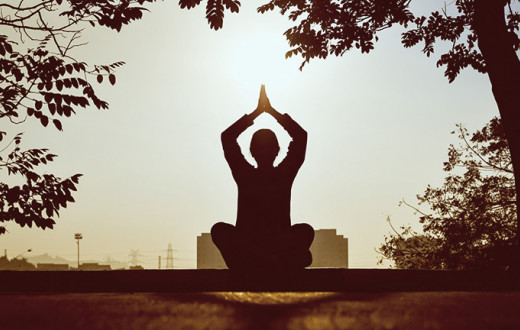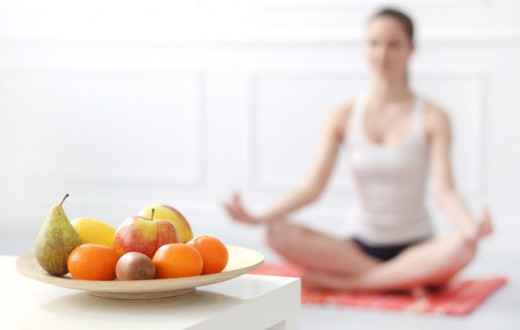
Many of those in fitness community have come experienced a situation like this - they have worked hard for months towards their fitness goals, and everything going great, but then they suddenly experience a plateau and complete disinterest for working out. They feel frustrated, their training no longer feels as exciting as it was before and they may even resent the time they dedicated to it.
This situation is more common than you may think, and fitness experts call it over training.
Overtraining is a common problem in weight training, but it can also be experienced by runners and other athletes (and also by power yogis). It occurs when the volume and intensity of the exercise exceeds an individual's recovery capacity. They cease making progress, and can even begin to lose strength and fitness.
When we combine our daily demands with intense exercise or training, our muscle tissue and our nervous systems undergo an unhealthy amount of stress. Overtraining puts our bodies in a sympathetic state (fight or flight) that releases cortisol - a stress hormone involved in cravings and weight gain) and adrenaline in the body.
Watch for these early signs and symptoms of overtraining syndrome
- A feeling of stiffness, soreness and achiness for prolonged time
- A lack of motivation to train for no specific reason
- Feelings of sadness, unpredictable mood swings, less energy and more fatigued
- Feeling stressed, irritable, or anxious in other areas of your life
- A diminished sex drive
- Disrupted sleep pattern
- A loss of appetite or unusual craving processed or frozen or fast foods
- Performance is deteriorating
Overtraining syndrome is a serious problem, but the good news is that it can be successfully remedied. More importantly, it’s easily prevented by adopting very simple principles and habits of Active Recovery. While you pursue your fitness goals, it is also beneficial to learn and incorporate these habits to keep your practice flowing and growing. The Fitness trends of 2017 are underlining and revealing a newfound focus on repairing, restoring, and regenerating.
Simple Solutions to prevent and manage overtraining
“Activity and rest are two vital aspects of life. To find a balance in them is a skill in itself. Wisdom is knowing when to have rest, when to have activity, and how much of each to have. Finding them in each other - activity in rest and rest in activity - is the ultimate freedom.” ― Gurudev Sri Sri Ravi Shankar, Celebrating Silence

Striking a balance between activity and rest is an important skill to learn.. Evaluate your habits and lifestyle realistically, and make changes where you need to. Consider all facets, physical (muscular and neurological), nutritional and mental, to ensure burn-out and break-down do not occur. When reviewing your recovery process, ensure that all areas are covered. See these three aspects as a tripod - all three need to be fully functioning for optimal performance.
- Honor and respect your body - Every body is unique. While you are training, it is advisable not to follow anybody else’s workout plan or goals. It is very important to listen to your body without taking it for granted. Love it, honor it and handle it with care.
- Reconsider your workout plan - Working out long and hard on a daily basis is extremely hard on our joints, muscles and nervous system. It may yield some flashy short-term results — like six-pack abs -- but long-term it leads to frequent injuries and elevated cortisol levels. Try to include periods of gentle movements and exercise variations like swimming, outdoor walking, mild sports, light jogging, bike riding, mindful and restorative yoga or Tai-chi in your workout plan.
- Drink plenty of water - It’s a well-known fact that the human body loves water, and is 80% water. Hydration is crucial for proper body temperature regulation as well as muscle and heart function. Research shows that a hydration deficit of as little as 2% decreases muscle strength and performance, because it leads to drop in plasma volume and hence adequate nutrition doesn’t reach all the cells of our body. There is a strong link between dehydration and delayed recovery.
- Pay attention to nutrition – Post-workout nutrition is extremely important to consider for active recovery, as can make the biggest difference in your performance, mentions US NEWS.
Vegetarian diets have experienced an increase in popularity, says Thomas M. Best, MD, PhD, FACSM, The Ohio State University, by the success stories of athletes who are world champions and also vegetarians - Dave Scott (vegan and five-time winner of the Hawaiian Ironman Triathlon), Martina Navratilova (tennis), and Edwin Moses (Olympic hurdling champion).
- Get enough protein, (nuts, beans, peas, edamame, etc) as it helps to build muscles and repair tissue.
- Eat antioxidant-rich fruits like berries, kiwi, Pineapple, and pomegranate, to speed up internal elimination of waste products, decrease inflammation, and support enzymatic function to restore cellular activities for faster healing and recovery.
- Eating nutrient rich vegetables like leafy greens, cauliflower, and cruciferous veggies like broccoli, cabbage, chard, bok choy, kale, radishes and turnips, will also help your body heal faster. - Get enough sleep - Sleep is the body's primary tool for repair, so make sure that you are getting at least 7-8 hours each night. This will help you to recover quickly from each workout session, and be ready for the next session. Athletes who get an extra amount of sleep are likely to improve their performance, says the Stanford Sleep Disorder and Research Laboratory.
- Meditate- Meditation is an excellent way to reduce your stress level, thus reducing the chances of muscular and nervous system fatigue. Meditating on regular basis connects us to our inner self and improves our intuitive ability. In the long run, this intuition may prove to me more beneficial than the six-abs.
If you've never tried it, meditation can sound a lot more difficult than it is. Just try out these basic instructions with an open mind and see the results for yourself. - Breathe - Ancient wisdom supported by recent research, tells us that breath is an important element of health. The majority of adults of use 1/3 capacity of their lungs, depriving the of enough oxygen and allowing the accumulation of carbon dioxide in the system. We feel sluggish, tired, lethargic, confused, and have recurrent infections and chronic inflammation the list goes on…. Controlled breathing can recharge us with fresh oxygen, and flush out unnecessary toxins. Controlled breathing can reduce a host of psychological ailments, like anxiety, depression, insomnia, PTSD, and ADD. It can also lower cortisol levels by calming the parasympathetic system.
- Other options - Myofascial release therapies, foam rolling, self-massage with herbal oils, cryotherapy spas, and infrared saunas are among some of the options that are being explored in many parts of the world for active recovery. It could be helpful to check some of these practices out to see if they work for you and your body.

By Sejal Shah, E-YRT 500 Yoga Teacher, Art of Living Teacher, Mind-Body Wellness Writer, Yogi, Meditator, Homeopath





























